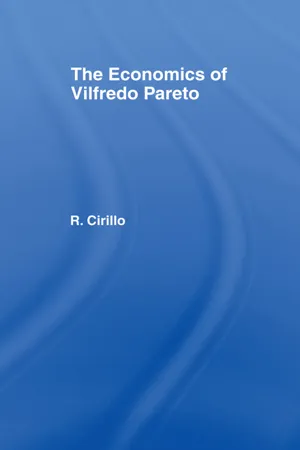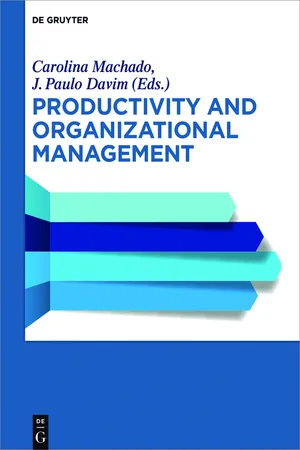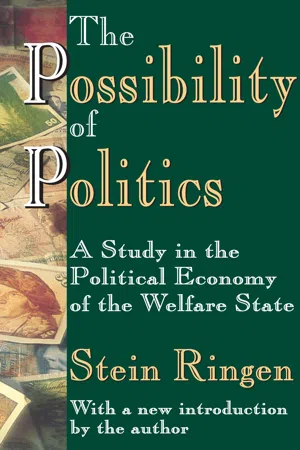Economics
Social Efficiency
Social efficiency in economics refers to the optimal allocation of resources to maximize overall societal welfare. It occurs when the production and distribution of goods and services result in the greatest possible benefit for society as a whole. Achieving social efficiency involves minimizing waste and ensuring that resources are used in a way that generates the greatest possible value for society.
Written by Perlego with AI-assistance
Related key terms
6 Key excerpts on "Social Efficiency"
- eBook - ePub
Economic Systems Analysis and Assessment
Intensive Systems, Organizations,and Enterprises
- Andrew P. Sage, William B. Rouse(Authors)
- 2011(Publication Date)
- Wiley-Interscience(Publisher)
It is strongly related to other approaches as we have seen in our discussions. We need to strive for Pareto optimality such that there will be no possible allocation of effort or reallocation of organizational resources that will increase product differentiation without increasing costs, and no reallocation that will decrease costs and which will not also decrease differentiation. Generally, an organization should select a single perspective for competitive advantage, that is to be a low cost producer or a high differentiation producer, and then adopt a competitive strategy that is supportive of this. This will insure that we deal with issues involving cost, value, and competition in information and knowledge intensive systems, organizations, and enterprises in an efficient and effective manner. 5.5 WELFARE MAXIMIZATION AND SOCIAL CHOICE As we have seen, the attainment of Pareto optimality results in situations in which it is not possible to make anyone better-off without making someone else worse-off. Thus Pareto optimal solutions are efficient. There is no guidance concerning equity in that any shift along a Pareto optimal frontier is bound to make someone better-off at the expense of making others worse-off. Thus it should be easy to get agreement on making all distributions Pareto efficient, but there is every reason to expect difficulty in getting agreement concerning which of the many Pareto efficient solutions to implement. To resolve this difficulty, we pose a scalar social welfare function that expresses a social or normative utility of a, perhaps large, set of individual utility functions. Since increasing the utility of any individual while holding that of all other individuals constant must result in an increase in social utility, we see that the social welfare function must be convex. A social welfare function maximum must, of course, be Pareto efficient - eBook - ePub
- Jesús Huerta De Soto(Author)
- 2008(Publication Date)
- Routledge(Publisher)
20Criticism of welfare economics and the concept of static efficiency
For obvious reasons, we cannot elaborate on all existing criticisms against the different standards of static efficiency that have appeared in the area of welfare economics. These approaches have already been critically analysed in a wealth of literature which we are unable to reproduce here. Nevertheless, we will summarize the most common objections, mainly to contrast them with the one we consider by far the most significant, and which up to now has been almost entirely disregarded.First, the different criteria of static efficiency established in the context of welfare economics involve the more or less covert introduction of value judgements devoid of scientific objectivity. As we have indicated above, this is clear of Pigou’s approach and the social-welfare function, since, in order to have any operative content, both require interpersonal comparisons of utility, which are scientifically unacceptable according to the general consensus among economists since Lionel Robbins. Furthermore, it is not altogether clear that comparisons of utility can be made even by the same individual in relation to himself if they correspond to different points in time and to the contexts of different actions. In such a case, even when the same person is involved, he would often be attempting to compare diverse and heterogeneous dimensions which are scarcely comparable with one other. Moreover, not even the Paretian approach, despite the appearances, could be considered completely neutral with respect to interpersonal comparisons and value judgements: an envious person, for example, might actually feel worse in the event of a Paretian improvement (if someone were to gain without ‘appearing’ to worsen anyone else’s situation, except, of course, that of the envious person). - John A. Schofield(Author)
- 2018(Publication Date)
- Routledge(Publisher)
In order to select projects or programmes which enhance social welfare, it is necessary to understand what constitutes the ideal situation at which decision makers should presumably aim, at least to the extent of moving society in the right direction. It is conventional to define this ideal as a situation in which nobody can be made better off without making someone else worse off. This is the Pareto optimum, named after the 19th-century Italian social scientist who identified this notion of maximum efficiency in the use of society’s scarce resources. If we ignore for the moment the distribution of the fruits of economic activity, who gains and who loses in the process of achieving the Pareto optimum, maximization of efficiency can be viewed as tantamount to maximization of social welfare.In order to understand the purpose of CBA, it is important to define the necessary conditions of Pareto optimality and to show under what conditions markets fail to generate these conditions. In the event of market failure there occurs a case for government intervention and the use of CBA for analysing public sector initiatives or evaluating the economic and social implications of private decisions. In this section we define the three conditions of Pareto optimality (or economic efficiency): efficiency in exchange, efficiency in production and efficiency in both exchange and production.Efficiency in exchange, the optimal allocation of commodities among consumers, requires that the marginal rate of substitution (MRS) between commodities be the same for all consumers. MRS is the rate at which the consumer is willing to trade off (substitute) one additional unit of a commodity for units of another. Noting that MRSxyrepresents the slope of the indifference curves for the two commodities X and Y, and that A and B are consumers, the Edgeworth box, in which the indifference maps of the two consumers are arrayed against one another, may be used to illustrate this proposition (Fig. 2.1). Suppose the initial endowment of commodities is at the point J with the consumers on indifference curves a2 and b2 . It is clear that a Pareto improvement may be made by reallocating commodities in such a way as to move on to the ‘contract curve’ (AB), along which MRSxyis the same for both consumers, between indifference curves a2 and b2 . In this way one consumer will be better off and the other at least no worse off. At the point K, for example, both consumers are better off, being on indifference curves a3 and b3 . Once a position is attained in which MRSaxy= MRSbxy- eBook - ePub
- Renato Cirillo(Author)
- 2012(Publication Date)
- Routledge(Publisher)
4There are still various interpretations of Pareto’s thought on this matter, but there is quite a universal consensus as to what constitutes a Pareto optimum: it indicates a position (organization or point) such that any change which makes some people better off results in making others worse off. In other words, if such a state is reached it is not possible to increase the utility of some consumers without diminishing that of others.So Pareto’s criterion leads to an ideal optimum, provided the income distribution is also ideal. If not, then it only helps us to understand how individuals can attain maximum welfare within the limits of their respective incomes.This could be demonstrated with the use of the familiar Edgeworth Box Diagram5 reproduced on p. 44.In this diagram A and B could be initially at any point C where two of their indifference curves intersect. They could always improve their position if they move and reach a point of tangency (D or E) between any two of their indifference curves. At that point their marginal rates of substitution are equal. By finding similar points within the diagram and joining them we get what is termed the contract curve. Any point on the contract curve is a Pareto optimum and evidently any situation outside is inferior. But we cannot say more than that. By reaching an optimum position A and B would maximize their welfare but they would still remain a pauper and a millionaire if they happened to be so in the first instance. It is evident then, that in a society where strong income disparities prevail, ‘maximization’ of welfare would be of limited value as far as the welfare of society is concerned. Incidentally one should observe that although Pareto assumed income distribution as given because he refused to make judgments, the acceptance of the contract curve as representing welfare optima is already a welfare judgment! - eBook - ePub
- Carolina Machado, J. Paulo Davim(Authors)
- 2017(Publication Date)
- De Gruyter(Publisher)
Yet in the sphere of production, higher productivity may outcome in structural unemployment in society as a whole. In the social domain, such as seeking more output per health worker, social worker or teacher, it also may lower the quality of service. This chapter distinguishes economic from Social Efficiency. It submits that an efficient society will invert the principle of economic productivity by employing more people in education, health and public and social services with smaller class sizes, shorter waiting lists for hospital admissions and more personalized services for those in need, not least in societies with aging populations. Drawing on evidence from the USA, Europe and Japan, it suggests that this has implications for redressing technological unemployment and increasing welfare within a social and economic paradigm of lean production. Introduction Economic productivity has been the benchmark of efficiency not only since Adam Smith illustrated the division of labor in pin making in his Wealth of Nations (1776) but especially since Henry Ford combined mass production with a Taylorist ultra division of labor [ 1 ]. An efficient economy produces more with either the same or less labor so that productivity rises. By contrast, however, as proposed in this chapter, Social Efficiency in the sense of more labor-intensive and personalized public services inverts economic productivity. No one ranks a primary or secondary school or university as better than another because it has bigger classes and less personalized teaching. No one prefers a hospital or health clinic because its doctors or health workers treat more patients than another - eBook - ePub
The Possibility of Politics
A Study in the Political Economy of the Welfare State
- Stein Ringen(Author)
- 2017(Publication Date)
- Routledge(Publisher)
In neo-classical economic theory, perfect markets by definition co-ordinate economic activity so that resources are used optimally, by which is understood that they are used in a way that corresponds to the preferences of the economic actors. Since real markets are never perfect, there are always inefficiencies in real economies. Inefficiencies result in a difference between the actual outcome of the economic game and the optimal outcome. This difference is commonly described as a welfare loss. It occurs because there are imperfections in real markets which prevent economic actors from making the choices they would ideally have preferred. They may, for example, not have a sufficiently wide range of choice or there may be incentives which encourage them to act differently from how they would otherwise have acted.In everyday parlance, we usually think of inefficiency as having to do with something going lost; we have less income than we might have had because we are inefficient in the way we do things that determine our income. But this is not the general meaning of the concept of inefficiency, as used in economic theory. Here, firstly, any use of resources that results in a different outcome from the optimal one is inefficient. There may be inefficiencies which, paradoxically, cause us to have ‘too much’ income, as in the case when part time work is not available so everyone is forced to work full time (assuming no one can afford to go without work). And, secondly, only uses of resources that result in non-optimal outcomes are inefficient. There is no inefficiency involved if we choose to give up some income because we would rather have more leisure.The concept of efficiency is, in the following, used in its most common economic meaning, that is, in relation to aggregate income and without regard to its distribution.26 By ‘income’ I here understand monetary income. ‘Potential income’ is the theoretically maximum possible income, defined for example as the sum of actual income and the value of leisure. ‘Optimal income’ is the same as the preferred income: for example the income that would have been generated in a perfect market. I shall ignore the not so interesting possibility of too much income and say that there is inefficiency in the economic system if we are collectively forced, because of market imperfections, to give up income that we would have preferred to have (consideration given to the sacrifices which would have been necessary in order to earn this income), or, in other words, if actual income falls short of optimal income. I underline the distinction between potential income and optimal income. The difference between actual and potential income is a cost; we have less income than we could have had. But only the difference between actual and optimal income is a welfare loss: we have less income than we would ideally have chosen to have. This corresponds to the distinction between anticipated costs and unanticipated side-effects which was made in Chapter 1
Learn about this page
Index pages curate the most relevant extracts from our library of academic textbooks. They’ve been created using an in-house natural language model (NLM), each adding context and meaning to key research topics.





